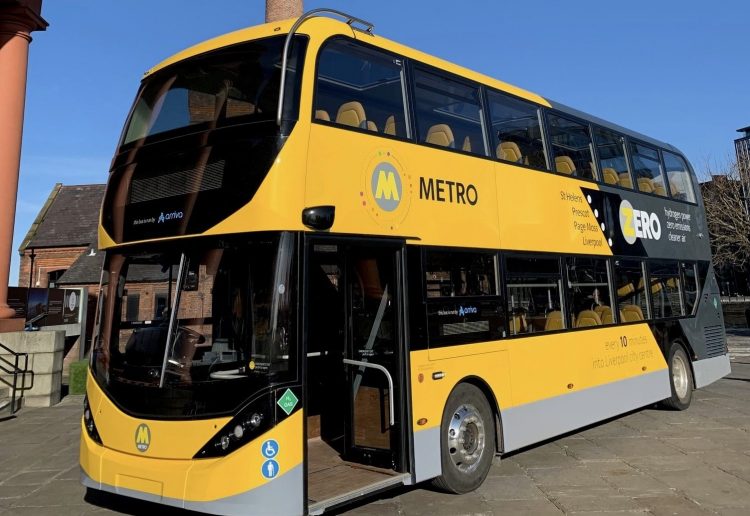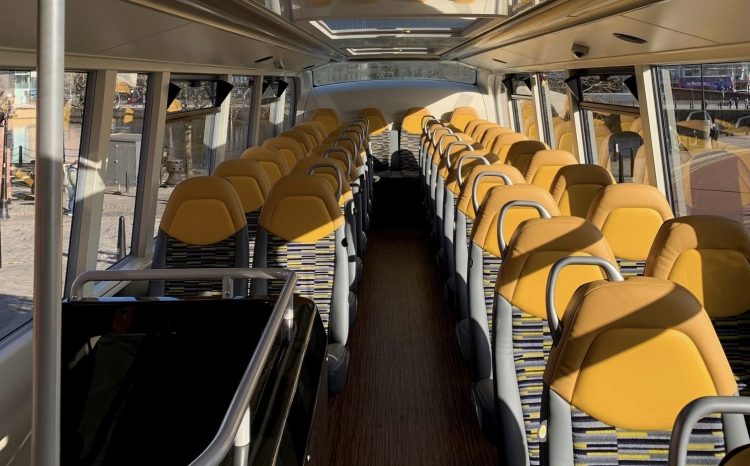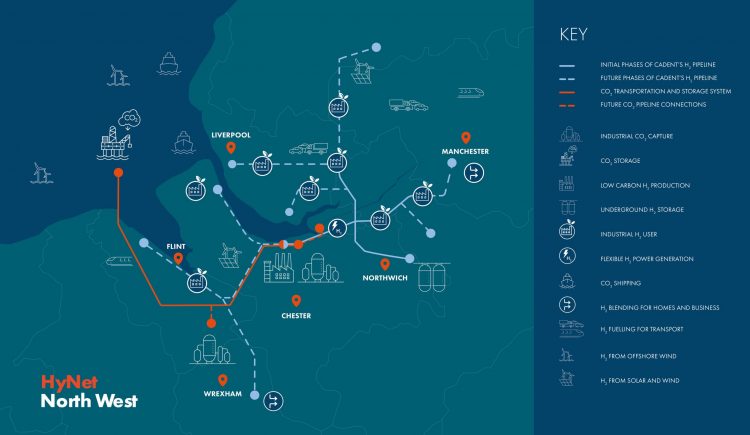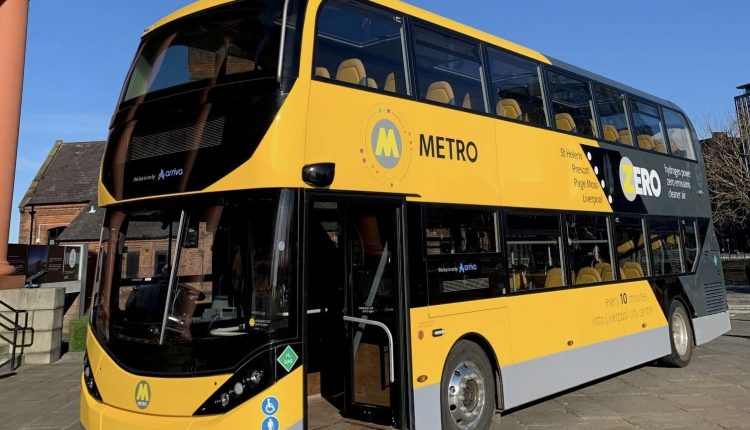This week the first of a £12.5m fleet of 20 hydrogen-powered buses will appear on Liverpool city region streets – but there is a question mark over how much carbon they will save. Tony McDonough reports

This week will see the arrival of Liverpool city region’s first hydrogen-powered buses.
Liverpool City Region Combined Authority has purchased 20 of the vehicles from manufacturer Alexander Dennis at a cost of £12.5m. This comes from the city region’s Transforming Cities Fund.
They will initially be operated by Arriva and Stagecoach on the 10A route between St Helens and Liverpool city centre.
Although people will see them on the roads from this week, it will be a few weeks until they come into service. Initially they will be used for driver training. A facility for ‘filling up’ the buses with hydrogen will be located in St Helens.
Metro Mayor Steve Rotheram hailed the arrival of the buses as the next step in his mission to create a “faster, cheaper, cleaner” transport network. In January the first of the Class 777 £500m train fleet came into operation on the Merseyrail Northern Line.
The buses will operate on so-called “green routes”. These will be implemented through a combination of priority lanes, traffic signal upgrades, remodelled junctions and upgraded, accessible passenger facilities.
On board the vehicles passengers will see increased wheelchair and pram capacity. There will also be wireless and USB phone charging, internet access and reading lights above the seats.
Mr Rotheram said: “We are now just a matter of weeks away from some of the best buses anywhere in the country entering service here in the Liverpool city region.
“I want to put the public back into public transport. This is just a down payment on my wider ambitions for our bus network.
“Very soon we’ll be launching a public consultation on the future of our buses as we work towards reregulating our network, meaning that buses will be run in the interests of passengers.”
Pollution caused by petrol-driven vehicles is a big issue for Liverpool city region as it is for urban areas across the world. Hydrogen buses emit only water vapour so that in itself is a big plus.
READ MORE: Government backs £2bn Mersey hydrogen hub
However, the main focus of the ‘green economy’ is to cut carbon emissions. And this is where the benefits of the buses are a little more difficult to pin down.
While the end use may be emissions-free for hydrogen-powered vehicles, the real issue is how the hydrogen is produced.
According to the International Energy Agency, 96% of hydrogen produced across the world each year is made using fossil fuels, including coal, oil and natural gas. This contributes significantly to climate change.
In the UK the Government is pinning part of its net zero hopes on something called blue hydrogen. This is hydrogen produced by burning natural gas. However, the carbon emissions are captured and stored instead of being released into the atmosphere.
In the North West the multi-billion pound HyNet project aims to be producing blue hydrogen at the Stanlow oil refinery close to the River Mersey by 2026. It will capture and store the emissions in depleted gas caverns under Liverpool Bay.


Carbon capture and storage (CCCS) is a controversial method disliked by a number of energy experts. They point out that it has not yet been successfully achieved yet at scale anywhere in the world and is just a way of extending the use of fossil fuels.
A cleaner way to produce hydrogen is so-called green hydrogen. This method sees water put through a device called an electrolyser which then separates out the hydrogen molecules. It is powered by renewable energy such as wind or solar.
However, the UK does not yet have anywhere near enough renewables capacity to produce hydrogen in this way at scale. The UK Government insists blue hydrogen is the medium-term bridge to green.
HyNet is conducting a small number of green hydrogen pilot schemes using electricity from onshore wind turbines in Cheshire.
Liverpool City Region Combined Authority has yet to announce where the hydrogen for its buses is being sourced from. Only then will we be able to calculate just how much carbon the new bus fleet will save.

